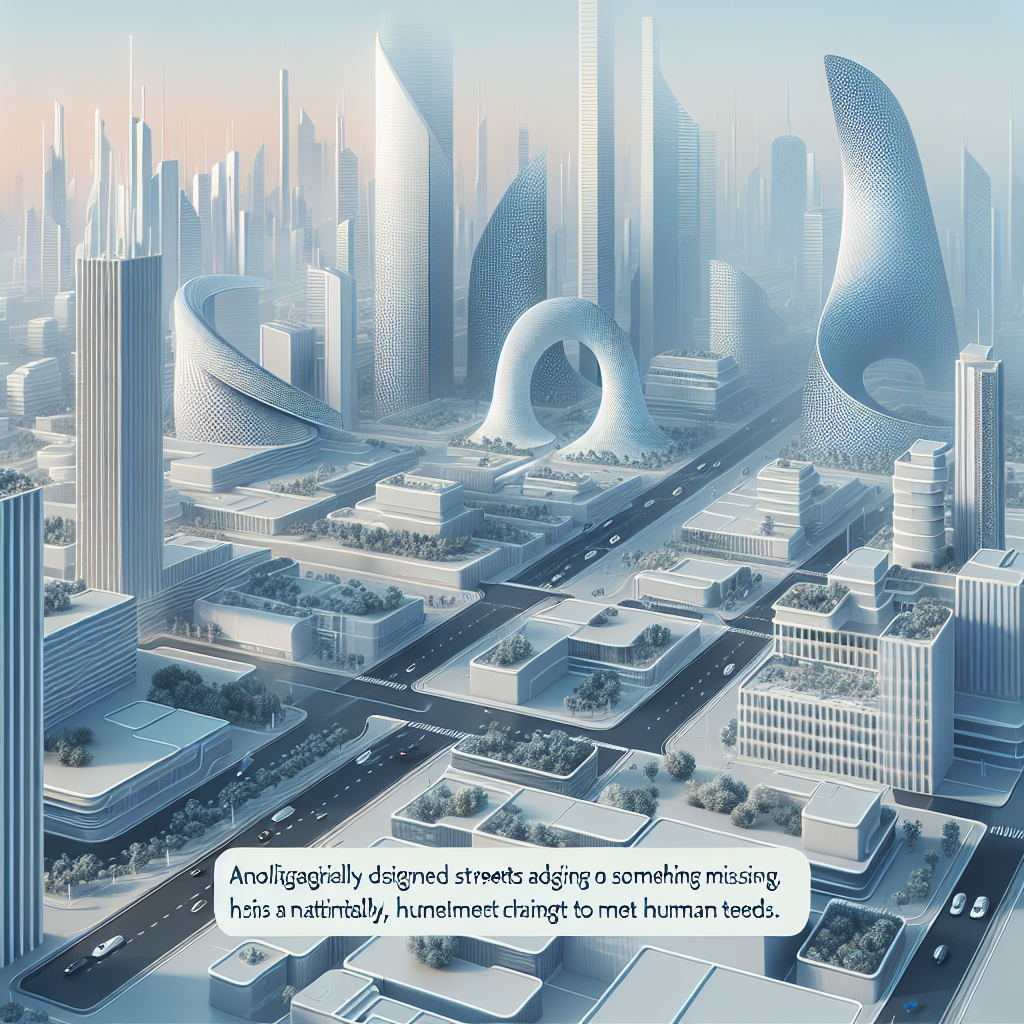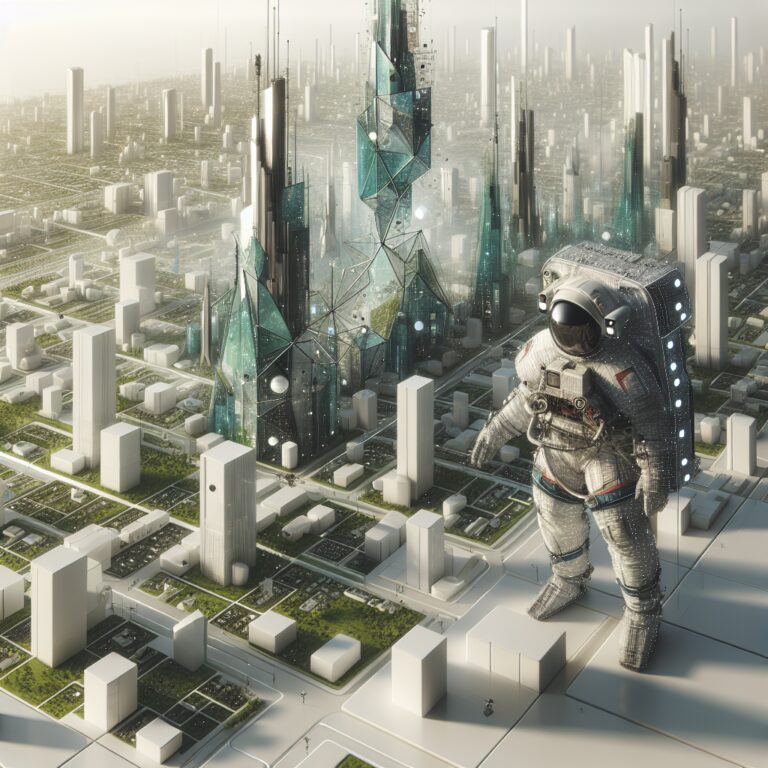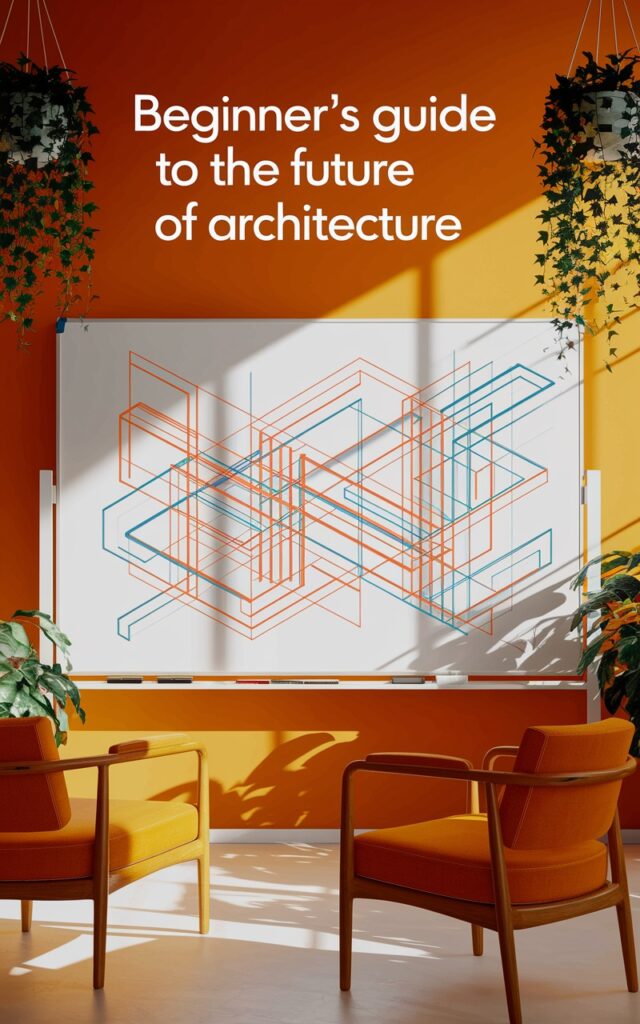Picture this: waking up in a city where every building, street, and public space has been precisely calculated to maximize your wellbeing, efficiency, and connection to others. *Where algorithms and human creativity converge to create living spaces as unique as fingerprints, yet functionally perfect.* Parametric design—the process of manipulating variables within algorithms to generate complex structures—is revolutionizing how urban planners envision our future cities. No longer constrained by traditional geometric limitations, architects can now create responsive environments that adapt to environmental conditions, population needs, and aesthetic preferences simultaneously. As technology and design continue their inevitable dance toward integration, we find ourselves asking profound questions about the essence of community, the balance between optimization and soul, and ultimately, what makes a city truly livable.*Where technology meets architecture, our cities transform from static structures into responsive, living organisms – but at what cost to human connection?*
Imagine waking up in a home that anticipates your needs before you’re even conscious of them. Your bedroom gradually illuminates as your sleep cycle naturally concludes. The shower runs at precisely your preferred temperature. Outside your window, buildings shift their facades to maximize energy efficiency based on the morning sun. This isn’t science fiction—it’s the parametric city of tomorrow, where algorithmic design reshapes urban life with unprecedented responsiveness.
The Evolution of Urban Intelligence
Cities have always evolved to meet human needs, but never at the pace we’re witnessing today. The future city isn’t just smart—it’s responsive, adaptive, and potentially prescient. Powered by parametric design, these urban environments exist at the intersection of data, algorithms, and physical space.
What Makes a City “Parametric”?
Parametric design represents a fundamental shift in how we conceive and create our environments. Unlike traditional design approaches that produce fixed outcomes, parametric design uses algorithms and variables to generate solutions that can evolve and adapt.
In the context of urban planning, parametric design allows architects and planners to:
- Define relationships between building elements rather than the elements themselves
- Create systems that respond to changing data inputs
- Generate multiple design iterations based on performance criteria
- Optimize structures for specific environmental conditions
Consider Barcelona’s Sagrada Família—though begun long before computational design, Gaudí’s masterpiece embodies parametric thinking through its nature-inspired, mathematically complex forms. Modern parametric cities take this logic exponentially further, creating responsive environments that can transform in real-time.
Algorithmic Zoning: Reimagining Urban Space
Traditional zoning divides cities into rigid categories: residential, commercial, industrial. This approach has shaped our urban environments for generations, often reinforcing social divisions and inefficient land use. In contrast, algorithmic zoning proposes a fluid approach where urban functions are distributed according to complex data analysis.
Imagine neighborhoods that transform throughout the day—a building that serves as office space during business hours, community center in the evening, and nightclub after dark. Streets that widen or narrow based on traffic patterns. Public spaces that reconfigure to serve different community needs as they arise.
The Living Infrastructure
In parametric cities, infrastructure itself becomes intelligent. Traffic systems don’t just react to congestion—they predict and prevent it. Energy grids balance loads automatically, drawing power from buildings with excess capacity to serve areas in need. Even waste management becomes a dynamic process, with collection routes optimized in real-time based on fill levels and composition data.
This dynamic infrastructural intelligence creates urban systems that mimic natural ecosystems in their responsiveness and resilience. Just as nature adapts to changing conditions through complex feedback mechanisms, parametric cities continuously evolve their systems based on usage patterns and environmental factors.
Climate Adaptation: Cities That Weather the Storm
Perhaps the most compelling case for parametric urbanism lies in climate adaptation. As extreme weather events increase in frequency and intensity, static urban designs show their limitations. Parametric cities, by contrast, can respond proactively to environmental changes.
Buildings in these future cities might feature facades that adjust porosity to manage ventilation during heat waves or seal tightly during storms. Flood-prone areas could deploy automated barriers based on weather forecasts and tide predictions. Urban forests could receive targeted irrigation based on soil moisture sensors and evapotranspiration rates.
Beyond Reactive Measures
The real power of parametric climate adaptation lies not just in reactive measures but in predictive modeling. Using historical climate data, current conditions, and projection algorithms, these systems can anticipate needs before crises occur. Water can be conserved weeks before a drought becomes severe. Energy consumption can be optimized days before a heatwave strains the grid.
This predictive capacity fundamentally changes our relationship with climate vulnerability, transforming cities from victims of climate change to proactive responders.
The Personalization of Urban Life
Perhaps most provocatively, parametric cities enable unprecedented personalization of public space. Through integrated sensing systems and user profiles, urban environments could adapt to individual preferences and needs.
Imagine walking down a street where:
- Digital signage displays information relevant to your interests
- Ambient lighting adjusts to your preferred brightness based on time of day
- Transportation options prioritize your typical destinations
- Public seating configures to your ergonomic preferences
This hyper-personalized urban experience offers tantalizing possibilities for accessibility. Cities could automatically adjust to accommodate different mobility needs, sensory sensitivities, or cognitive preferences without requiring special requests.
The Social Calculus
Yet personalization creates tension with shared experience. What happens when my preferred temperature conflicts with yours? Whose music plays in shared spaces? How do preferences get prioritized when they conflict?
These questions highlight that parametric cities aren’t merely technical challenges—they’re social experiments demanding new frameworks for balancing individual preferences with collective values.
Ethical Tech in Design: The Human Element
As we embrace algorithmic urbanism, ethical considerations must remain central. The most sophisticated parametric models are meaningless—or worse, harmful—if they don’t center human wellbeing and equity.
Addressing the Digital Divide
Parametric cities risk deepening existing inequalities if access to their benefits requires specific devices, technical literacy, or financial resources. Truly successful implementations must ensure that responsive environments serve everyone, not just the digitally privileged.
This means designing systems with multiple interaction modalities, from sophisticated digital interfaces to simple, intuitive physical controls. It means creating algorithms that recognize and correct for bias rather than amplifying it. And it means preserving spaces free from digital mediation, where human connection remains direct and unfiltered.
Privacy in the Sensing City
A city that responds to your needs must first know those needs—raising profound privacy questions. The parametric city is inherently a sensing city, collecting data about movement patterns, preferences, and behaviors.
Ethical implementations must provide:
- Transparency about what data is collected and how it’s used
- Meaningful consent mechanisms that aren’t burdensome
- Options to participate in collective benefits without surrendering personal data
- Clear policies about data retention and sharing
Would You Want to Live There?
The parametric city offers a vision that is simultaneously exhilarating and unsettling. It promises environments that respond to our needs with unprecedented precision, infrastructure that navigates climate challenges with adaptive resilience, and urban systems that optimize for efficiency while remaining flexible.
Yet it also raises profound questions about privacy, equity, and the nature of community. When algorithms mediate our experience of public space, what happens to serendipity, to friction, to the productive collisions that have historically made cities engines of innovation?
Perhaps the most balanced approach views parametric design not as a wholesale replacement for traditional urbanism, but as an expanded toolkit that enhances human capability. The most successful parametric cities will likely be those that use responsive technology to amplify what makes urban life valuable in the first place: diverse human connections, creative expression, and the shared experience of place.
The question isn’t whether cities will become more parametric—they already are. The real question is whether we’ll shape these technologies to serve our deepest human needs, or allow ourselves to be shaped by them. The choice, ultimately, remains ours to make.
Bringing It All Together
From reimagining ceilings as canvases for creativity to transforming bare walls into storytellers of personal style, we’ve explored how spaces shape our lives. Whether refreshing a facade or reshaping interiors, small changes spark big emotional shifts. Key takeaways: Design is intentional, limitations are opportunities, and every space holds potential.
Now it’s your turn! Reflect on what inspires you, experiment fearlessly, and turn your surroundings into reflections of your values. Share your boldest ideas below—or better yet, grab a paintbrush, rearrange a room, or tackle that project you’ve delayed. The walls around you shouldn’t hold you back; they should lift you higher. Let’s build spaces that empower, one inspired step at a time. 💫




